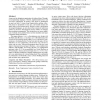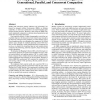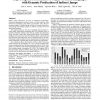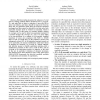1407 search results - page 264 / 282 » The Use of Overloading in Java Programs |
PLDI
2010
ACM
14 years 14 days ago
2010
ACM
Arrays are the ubiquitous organization for indexed data. Throughout programming language evolution, implementations have laid out arrays contiguously in memory. This layout is pro...
ASPLOS
2008
ACM
13 years 9 months ago
2008
ACM
Parallel and concurrent garbage collectors are increasingly employed by managed runtime environments (MREs) to maintain scalability, as multi-core architectures and multi-threaded...
ASPLOS
2008
ACM
13 years 9 months ago
2008
ACM
Indirect jump instructions are used to implement increasinglycommon programming constructs such as virtual function calls, switch-case statements, jump tables, and interface calls...
TOPLAS
2008
13 years 7 months ago
2008
act Interpretation C. BERNARDESCHI, N. DE FRANCESCO, G. LETTIERI, L. MARTINI, and P. MASCI Universit`a di Pisa Bytecode verification is a key point in the security chain of the Jav...
ICST
2010
IEEE
13 years 6 months ago
2010
IEEE
—Mutation testing measures the adequacy of a test suite by seeding artificial defects (mutations) into a program. If a test suite fails to detect a mutation, it may also fail to...




